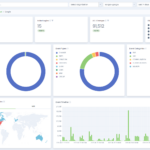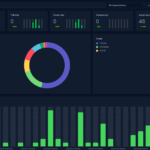
As organizations adapt to the ever-changing cyber threat landscape, they increasingly depend on threat intelligence feeds to remain informed about the latest malicious activities and safeguard their digital assets. These feeds provide real-time, actionable information on a variety of cyber threats, encompassing elements such as IP addresses, domains, malware hashes, and email addresses. However, the very resource designed to protect an organization can also become its Achilles’ heel when threat actors poison these feeds, potentially compromising networks and systems. In this blog post, we delve into the significance of proper curation and validation of artifacts as a means to counter the risks linked to threat intelligence feed poisoning.
An Overview
Threat intelligence feed poisoning is a technique employed by cybercriminals to manipulate or inject false information into threat intelligence feeds. By doing so, they aim to mislead security teams and tools, causing them to make erroneous decisions based on the tainted data.
The poisoned feed can lead to several adverse consequences, including:
- False Positives
Organizations may block legitimate IP addresses or domains, causing service disruptions and harming their reputation. - False Negatives
Security teams may overlook genuine threats, allowing cybercriminals to penetrate and exploit the organization’s infrastructure. - Wasted Resources
Security teams may waste time and resources investigating fake threats, leaving them vulnerable to real attacks.
The Importance of Proper Curation and Validation of Artifacts
To effectively combat the risks of threat intelligence feed poisoning, organizations must prioritize the proper curation and validation of artifacts. This process involves three main steps:
- Source Evaluation
Assess the credibility and reputation of threat intelligence feed providers. Reliable providers are transparent about their methodologies, have a proven track record, and invest in the necessary resources to maintain high-quality feeds. It’s essential to diversify your intelligence sources to avoid relying on a single provider, which could be compromised or have biased data. - Artifact Validation
Verify the accuracy and relevance of threat artifacts before incorporating them into your security systems. This process may include cross-referencing data from multiple sources, researching recent threat trends, and conducting independent analysis to confirm the legitimacy of the information. Employing a combination of automated and manual validation methods can ensure comprehensive and accurate threat intelligence. - Continuous Monitoring and Updating
Regularly review and update threat intelligence feeds to keep pace with the rapidly changing threat landscape. Implementing a feedback loop that tracks the effectiveness of your threat intelligence program will enable you to make data-driven adjustments and maintain the highest level of security.
The Role of Threat Intelligence Platforms and Security Orchestration, Automation, and Response (SOAR) Tools
To facilitate the proper curation and validation of artifacts, organizations should consider investing in Threat Intelligence Platforms (TIPs) and Security Orchestration, Automation, and Response (SOAR) tools. These solutions can help automate and streamline the entire process, minimizing the risk of human error and improving the overall efficiency of your security operations.
TIPs centralize, normalize, and analyze data from multiple sources, allowing security teams to quickly identify and validate relevant threat artifacts. Meanwhile, SOAR tools can help automate and orchestrate threat intelligence workflows, ensuring timely and accurate responses to potential threats.
Closing out
The growing reliance on threat intelligence feeds has led to a corresponding rise in threat intelligence feed poisoning, making it crucial for organizations to prioritize proper curation and validation of artifacts. By implementing a robust and well-rounded threat intelligence program, organizations can better protect themselves from false positives, false negatives, and wasted resources, while maintaining a strong defense against real cyber threats.








